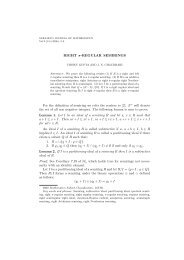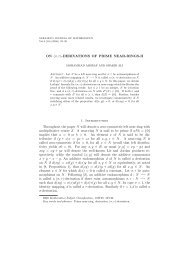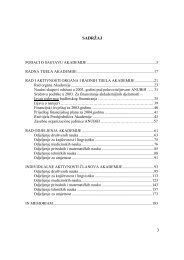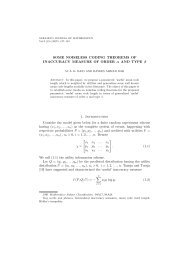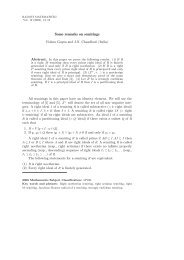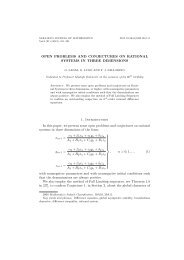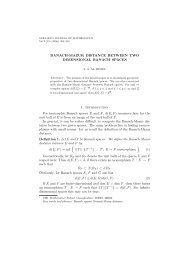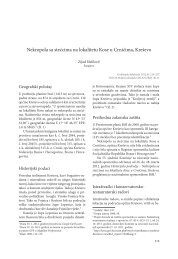HERBOLOGIA - anubih
HERBOLOGIA - anubih
HERBOLOGIA - anubih
You also want an ePaper? Increase the reach of your titles
YUMPU automatically turns print PDFs into web optimized ePapers that Google loves.
Herbologia Vol. 7, No. 1, 2006.<br />
HERBICIDE-RESISTANT CROPS - ADVANTAGES AND RISKS<br />
Zvonko Pacanoski<br />
Faculty for Agricultural Sciences and Food, 1000 Skopje, R. Macedonia<br />
zvonkop@zf.ukim.edu.mk<br />
Abstract<br />
Revealing of genetically modified, herbicide-resistant crops (HRCs)<br />
at the end of the 20 th century brought many controversies. At one side, HRCs<br />
enable the farmers to more effectively use reduced or no-tillage cultural<br />
practices, eliminate of troublesome weeds resistant to some herbicides, using<br />
nonselective herbicides, usually glyphosate and glufosinate as<br />
“environmentally friendly” herbicides, decrease of expenses for crop<br />
production, and finely, more economically and effectively manage of weeds.<br />
At the other side, there is fear of possibile developing of weed resistant to<br />
non-selective herbicides, appearance of volunteer HR crops, invasion of the<br />
environment beyond the farm boundary, influence of HRCs to biodiversity,<br />
exchange of genetic material between related HRCs and wild progenitors,<br />
conventional crops, and weeds. The coming period should clarify the<br />
eventual impact of these powerful new tools on weed science, weed<br />
management, environment and human health.<br />
Keywords: Genetically modified organisms (GMOs), herbicide-resistant crops<br />
(HRCs), glyphosate, glufosinate, weeds<br />
Introduction<br />
Weed control obtained a new dimension with recent revealing and<br />
practical application of plant growth regulators. From that moment chemical<br />
industry in collaboration with science have focused on creation of new<br />
herbicide active ingredients with large efficacy, selectivity and possibility for<br />
use in all crops against almost all weed species. In that period has developed<br />
opinion that weed problem would be dissolved forever, without investing<br />
efforts in finding and development alternative methods for weed control.<br />
However, a long period did not pass when the first problem appeared -<br />
resistance of some weeds to some herbicides, on which, until that moment the<br />
weedd had been susceptible. The number of resistant weeds to some<br />
herbicides continuously have increased. According HRAC and WSSA, about<br />
182 weed species worldwide (109 broad-leaved and 73 grass weeds)<br />
developed resistance to large number of different herbicides from all mode of<br />
action groups. In the beginning, increasing the herbicides rate was one of



